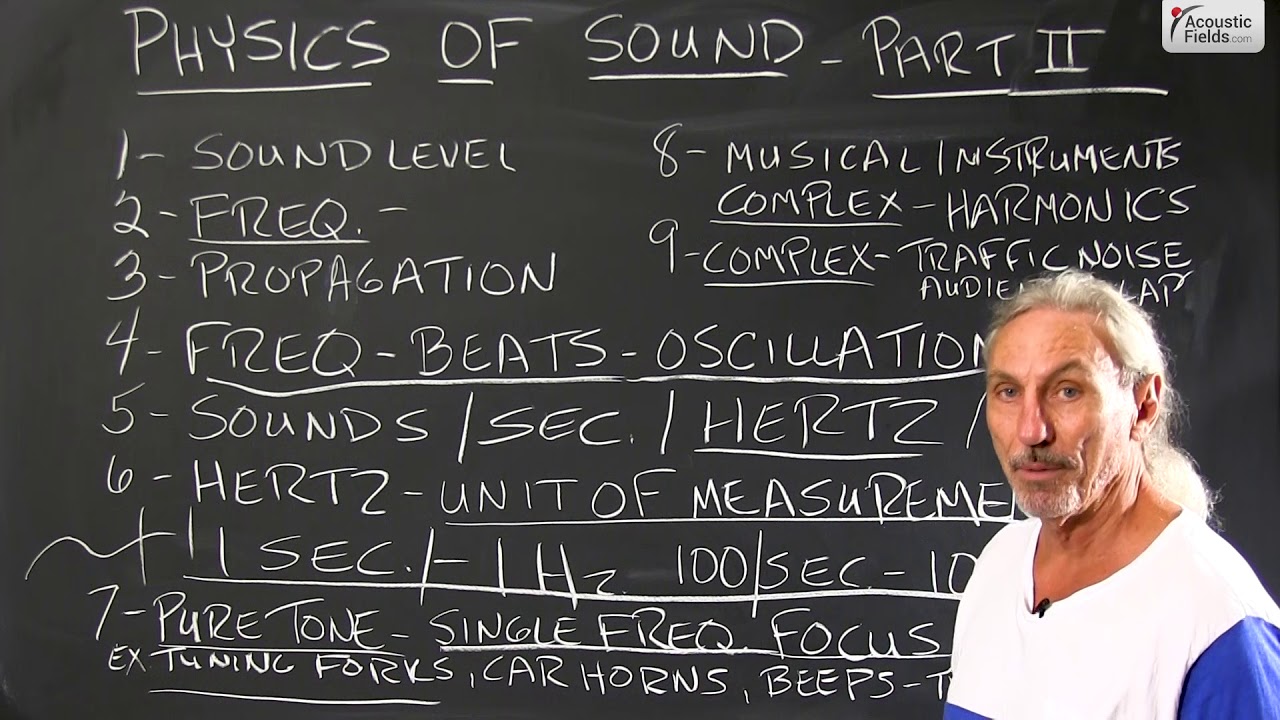Let’s talk about frequency which is part 2 of our physics of sound series, kind of back to basics program. I want to give you a feel for physics because then we take the general knowledge and feel, if you will, for physics and then we apply it to acoustics which is a science of physics, science of sound. So we want to define our terms.
In part 1 we talked about sound levels of strength. Today we’re going to talk about frequency. And we know from discussions in the past, frequency is all about beats, oscillation. We know that energy moves through our room in cycles. It’s all about the cycle or the sounds per second and that is defined by the symbol Hz which is Hertz. So just like the decibel was the unit of measure when we talked about sound level, Hertz is the unit of measure for frequency.
So what do we get for examples to look at and get kind of a feel for it? One second is one Hertz. So one second oscillation is one Hertz, okay? A 100th of a second oscillation is a 100 cycles. So that will give you a little bit of math to go with frequency, okay? Now we take the frequency, all of this oscillation and the measurement of it and we break it down into tones.
So a pure tone is a single frequency so we want to focus on just a single frequency. What’s some good example of pure tones? Tuning forks. All of us that have been in the music business have seen these. Tuning forks oscillate at certain pure tone frequencies, okay? Car horns, another one. Why do you think car horns sound the way they do? Why do they get your attention so quickly? Well, because they’re a pure tone. They’re different than a complex tone which we’re going to talk about in a minute.
How about the one for trucks backing up? Does that get your attention? Sure it does because it’s a pure tone. Most of the tones we hear in our daily lives are not pure. They’re complex. Musical instruments, good example of complex tones. Lots of fundamentals, lots of harmonics. Pure tone, no harmonics, just pure, single frequencies. Okay? So the complex get into the harmonics, get into the structure, the tail, if you will, of the fundamental. Complex, traffic noise. Audience clapping, those are complex sounds. They have fundamentals and harmonics. Pure tones do not.
So I hope that kind of gives you an idea of frequency, we talked in the first part about sound level. This is part 2 about frequency and in part 3 we’ll talk about the propagation of sound energy.
—
This is an unedited transcript from our video series from Acoustic Fields. There will be some errors in grammar and sentence structure that occur during this translation process.
For complete understanding and comprehension, please view the video which is included in this text. For any additional information regarding this topic or others relating to room acoustics, please contact us directly at:
P: 520 – 392 – 9486







